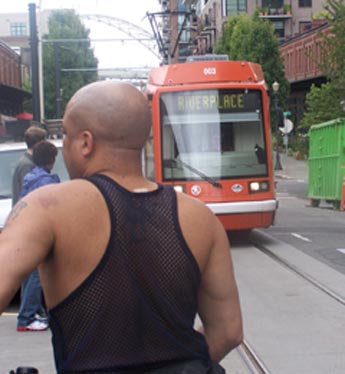The American Prospect, one of the important forums of progressive thought, published a special section last month on “Emerald Cities.”Â
The point that none of the pieces makes strong enough is that the cities achieving the American Mode Shift also are the most prosperous. That’s true here in Michigan, where Ann Arbor, Traverse City, and Grand Rapids are changing the rules of the development game and also are leaders in business development in a state anchored by the old tires and obsolete hierarchy of its auto industry.Â
Ann Arbor established a green belt. Traverse City killed a needless beltway and bridge and replaced it with a $1.36 million regional land use and transportation project. Grand Rapids leveraged $2 billion in private and public funding to rebuild its downtown and use its water and sewer lines to lasso development at the edge.
It’s even more true in the metropolitan regions in other states that are pursuing new green strategies, and installing the civic equipment — trains, rapid buses, sidewalks, parks, safe neighborhoods, greenways, energy efficient buildings –that residents need to thrive and survive in this century.
Portland, Oregon halted a $1 billion freeway in the early 1990s and replaced it with two light rail lines and a downtown streetcar (see pix) that prompted $2 billion in housing and retail development. The city supports a multi-million dollar sustainable investment fund for green business start-ups and projects.
Seattle is weighing whether to tear down a shoreline freeway even as it prepares for new downtown businesses and 60,000 more jobs without expanding the number of parking spaces, which take up valuable room.
Denver is building a 172-mile regional rapid transit system financed in large part by the decision residents in seven counties made to increase their sales tax. When it’s finished it will be the largest rapid transit system in the West, and its transit stop and stations will serve as the new nodes of the metropolitan region’s business and housing development.
Salt Lake City reduced emissions of global warming gases by 36,000 tons annually, built a rapid transit that will grow substantially in the next decade, required public buildings and any publicly financed buildings to achieve the highest standards of energy efficiency and environmental design, and attracted thousands of new homes and residents. The city’s population has reached 182,000 and is closing in on the peak of 189,000 achieved in 1960. Salt Lake City and its suburbs, by the way, also registered an unemployment rate last month of less than 3 percent.  Â
Chicago’s green development strategy is based on improving parks, planting trees, conserving the Lake Michigan shoreline, and making public and private buildings more energy efficient. The city’s population is growing and thousands of new homes are under construction. Â
You can read more on March 7 in a special Green Business section published by the New York Times and on the Michigan Land Use Institute’s Web site.

